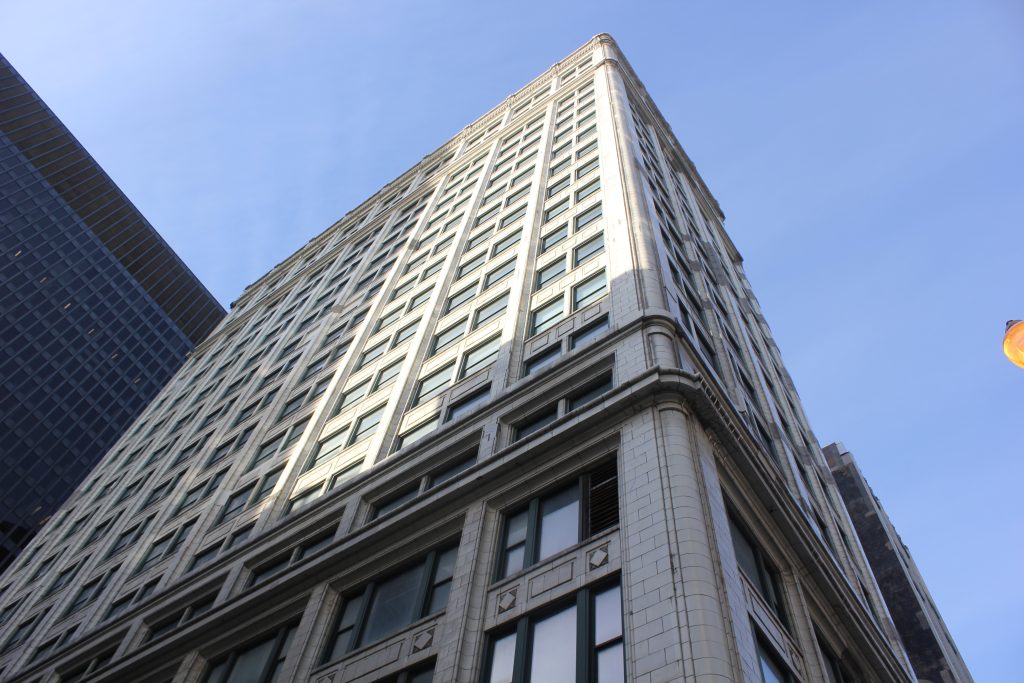Reimagining Downtown Chicago’s Shopping Streets: State Street & Michigan Avenue

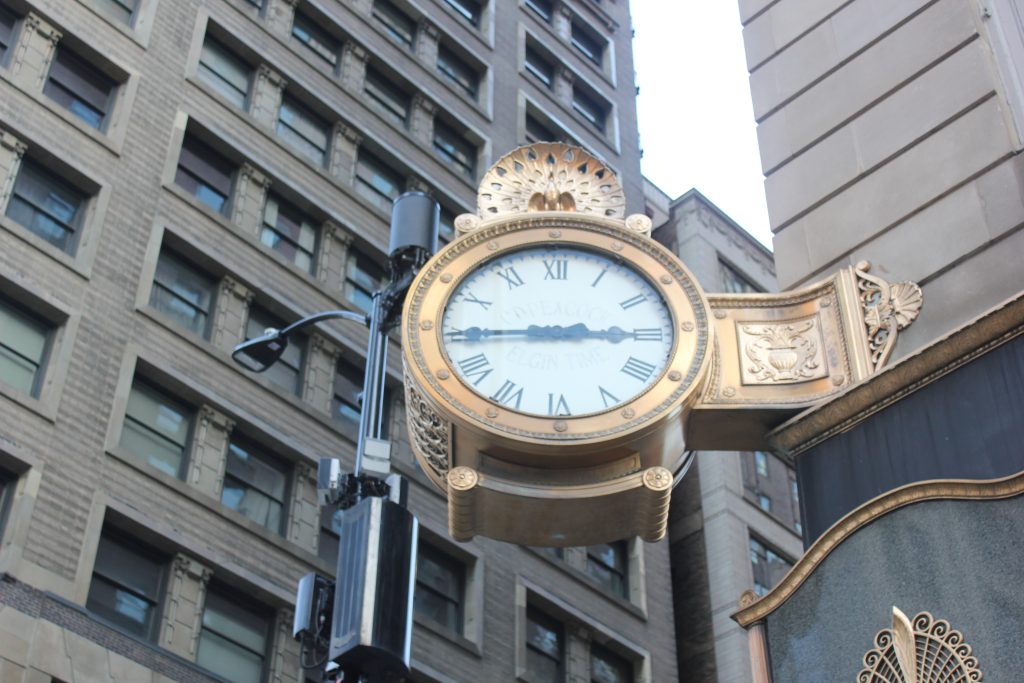 Clock outside the former CD Peacock store/Photo: Todd Hieggelke
Clock outside the former CD Peacock store/Photo: Todd Hieggelke
Part three in a series on the future of downtown Chicago.
Part one.
Part two.
Order the issue.
***
Downtown Chicago’s two most iconic shopping streets are flagging, struggling to reinvent themselves in the wake of the pandemic and the rise of ecommerce. While Team Culture envisions downtown as a vast Cultural Stadium, State Street and Michigan Avenue merit special attention: They are the central corridors of the city, places from which the street life of downtown emanates, and where both lifelong Chicagoans and “experiential collectors” determine the vitality of the city.
There’s talk of street-level updates, like Gensler’s Michigan Avenue proposal or the Elevate State initiative, but beyond more sidewalk cafés, better walkability and new places to linger, the spaces that line these streets need to be reimagined.
Much like Lou Raizin searched the world for ideas for the Cultural Stadium, Chicago can look to other cities for inspiration: the covered passages of Paris lined with shops that evoke the city’s past, the IKEA stores in downtown San Francisco or Toronto. The “shopping as experience” exemplified in areas like Tokyo’s Shibuya District. (Death of retail? The Tower Records logo hangs atop its eight-story store over the district’s Miyashita Park.) In London and Paris, the historic department stores are treated like immutable facts of the city’s life—no one in London is wondering when Harrods might shutter its doors.
The city’s got to realize everything it’s got, and begin to use it.
Six ideas for State Street
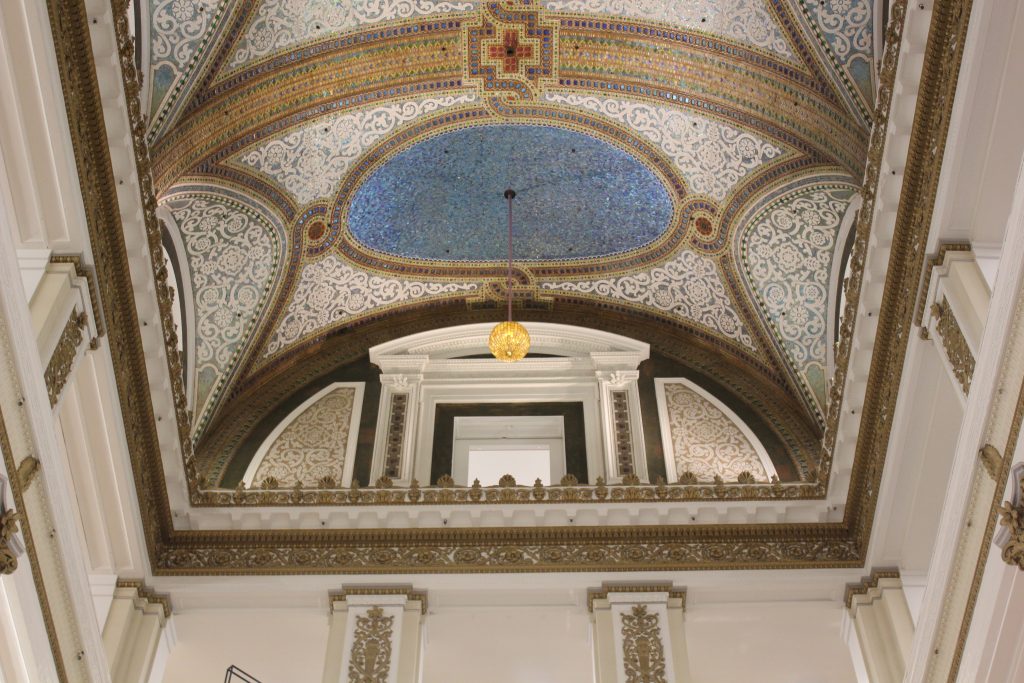
 Marshall Field’s State Street interior/Photo: Todd Hieggelke
Marshall Field’s State Street interior/Photo: Todd Hieggelke
Local Ownership for the Marshall Field’s Store
Marshall Field’s was perhaps State Street’s greatest institution. While Macy’s recent renovation has lifted the space a little, its absorption some two decades ago is still felt across the shopping experience, from halfhearted Christmas windows to plastic shopping bags.
A local owner can do what a company with 500 stores cannot—concentrate on making the State Street Marshall Field’s a singular destination, leaning into the experiential side of retail as well as the culture of the city it calls home. The Marshall Field’s of Chicago feels distinct from Tokyo’s Isetan and Paris’ Galeries Lafayette.
An owner who markets the store like a local institution, who recreates the magic of The Walnut Room during the holidays across more time and in more spaces, and who brings back the emerald green paper shopping bags might show us how the future of America’s flagship department stores can resemble their pasts. And if major luxury brands like LVMH and Kering buying buildings on prime retail stretches outright is any indication, I expect they’d be rewarded for their efforts.
Perhaps the downtown department store will become the new sports team—a chance to be a steward of the city’s fabric.
***
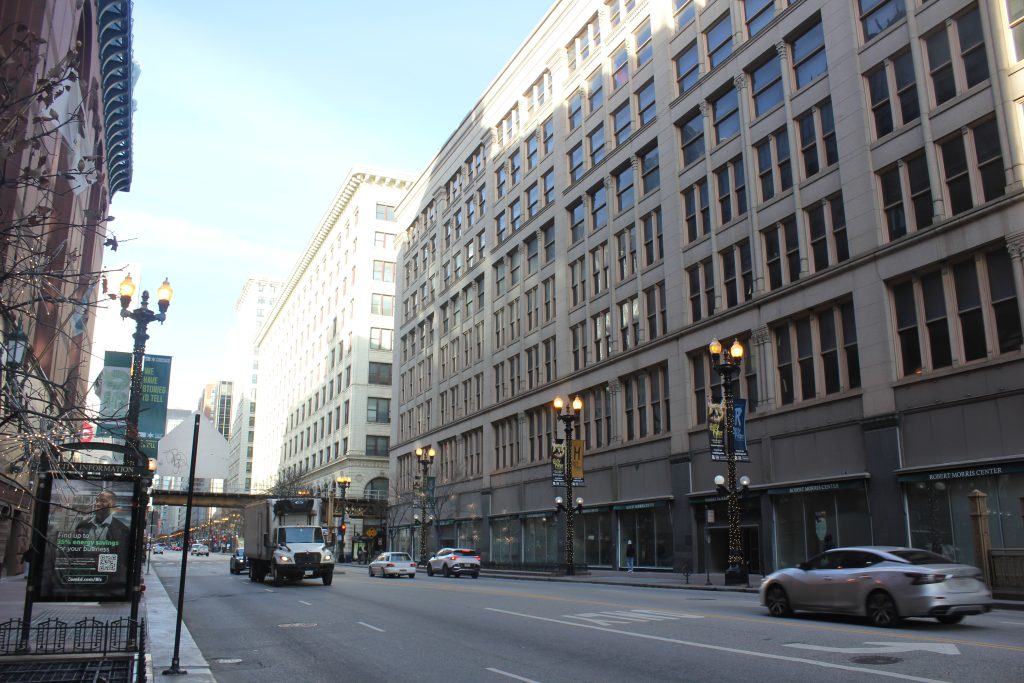
 Second Leiter Building at 401 South State/Photo: Todd Hieggelke
Second Leiter Building at 401 South State/Photo: Todd Hieggelke
A Downtown IKEA at State & Ida B. Wells
South State Street could become a hub of value-oriented home retailers, a complement to the traditional higher-end stores around Merchandise Mart. That would suit State Street’s historical identity as the everyman’s downtown shopping street.
IKEA would make a great anchor, attracting shoppers from across the city, including nearby students and downtown residents, and acting as a catalyst that might convince other home stores to invest in nearby space. Possibilities include everyone from MUJI to Room & Board, as well as local retailers like Foursided.
We typically think of IKEA as a suburban store with vast parking and loading areas, but the company has recently experimented with smaller-format downtown stores oriented around portable objects for purchase on site, and furniture delivered at home later. They opened this format in downtown San Francisco in August 2023.
The landmark Second Leiter Building at 401 South State, designed by skyscraper pioneer William Le Baron Jenney, would make an ideal location. Most recently the site of Robert Morris University, and before that a Sears department store, it’s currently vacant. A back-of-napkin estimate shows they should be able to execute this project with a smaller budget than their downtown San Francisco project, with considerably more space to sublet.
***
A Miniatures Museum for the Consumers Building
After earmarking $52 million to tear down the Century & Consumers Buildings in 2022, pushback from the preservation community led the federal government’s General Services Administration, which owns the buildings, to make a turn this past summer, announcing they would instead redevelop the towers. Still, their future remains uncertain—restrictive redevelopment guidelines prohibit residential or hotel uses, as well as any sightlines into the neighboring Dirksen federal courthouse.
The restriction on uses should be reconsidered for the Century Building. Its south and west façades are brick walls, with no possible sightlines into the courthouse; its only windows face east onto State Street and north out to Adams Street. A fire escape on its north façade was the only vantage point with a sightline into the courthouse, but it’s recently been removed.
The Consumers Building is trickier in this respect, with windows facing out in every direction, including ones toward the courthouse. Still, there are uses that wouldn’t require sunlight, allowing the windows to be blocked off: Preservation Chicago has proposed an archives center, one devoted to the city’s religious organizations. The Trove, proposed by Team Culture, is envisioned as a place where the city’s museums might display artworks from their collections beyond their main galleries. That might fit into the building as well, and bring more vibrancy than an archives center could on its own.
A third idea for the Consumers Building could also add to the street’s depth and energy, providing a new attraction for downtown: a miniatures museum. It would be unique enough to draw visitors from across the globe and have ties to Chicago’s legacy: think of the Art Institute’s Thorne Rooms, Colleen Moore’s Fairy Castle and the city’s central role in the railroad industry (where dollhouses and model trains might both have a place).
This could occupy the lower floors of the Consumers Building, with archival or collection uses on the higher floors, all requiring no sightlines to the neighboring courthouse. For visual interest, miniatures could be displayed in south and east-facing windows and be lit at night, evoking the legacy of State Street’s Christmas windows, with display areas bricked from the inside.
The museum could also incorporate special exhibitions from film productions, which have used miniatures extensively—think “Blade Runner 2049,” Wes Anderson’s movies, or any of a host of sci-fi or historic films dating back to Méliès—giving Chicagoans a reason to visit regularly, too.
On the ground floor, the museum might incorporate a gift shop, café or workshop—any of these could be successful if they embody the theme of the institution. If the GSA would support moving their security guard to the western edge of the plaza, removing the curb cut and barricade on State Street, these uses could spill out into the plaza, adding vital public space as well as vibrancy to this section of the street.
(Barbara Kasten should have a prominent public artwork in the city, and this plaza could be a great place for it given its cavernous nature. If not here, perhaps her work could be featured in the pedway, a revival of which is one idea explored by Team Culture.)
***
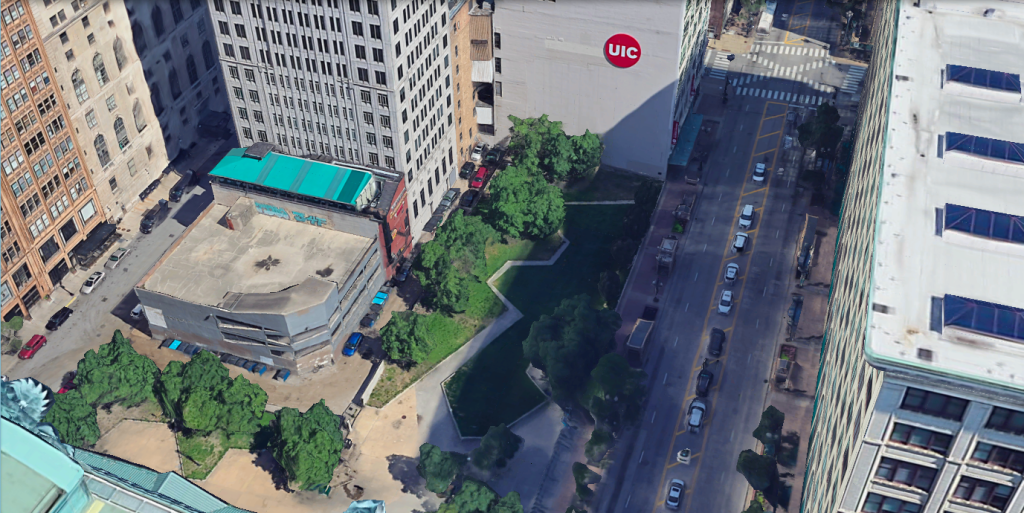
 Pritzker Park/Google Earth, 7/18/2023
Pritzker Park/Google Earth, 7/18/2023
A Covered Passage for Pritzker Park
The northern half of Pritzker Park could be developed into a covered passage like you might find in Paris, as described in Walter Benjamin’s unfinished “Arcades Project.” These are long, enclosed shopping arcades with central walkways topped by glass ceilings, lined with small shops on either side.
Perhaps it could be themed to reflect Chicago’s history as the candy capital of the world—as documented in the “Candy Capital” Chicago Stories episode—with a focus on small shops serving sweets: candy, bakeries and chocolatiers. This would create another much-needed destination for kids and families downtown.
The southern end of the passage could lead into a public plaza and park, with ample public seating and tables maintained by food and beverage vendors serving the space, resembling the dynamic of Mariano Park in the Gold Coast. To make up for lost green space, the non-glass sections of roof could be converted into a linear rooftop park, like Tokyo’s Miyashita Park.
The northern end of the passage could terminate in a duplex building, boasting a grand Crystal Garden-like space on the top floor that doubles as a restaurant and event space. Perhaps the ground floor could be an ice cream parlor, to fit into the theme and add another attraction to State Street.
***
A Polish Buffet in Block 37
Block 37’s big dining attraction, Latinicity, closed during the pandemic, and the expansive space has been vacant since. While the popularity of buffets has declined outside of Vegas, Chicagoans still trek to Polish buffets like Red Apple in Norwood Park or Sawa’s Old Warsaw in Broadview.
Polish food is hardly represented downtown, despite the metropolitan area historically being home to the biggest Polish population outside of Warsaw. A Polish buffet might become a mainstay of the Loop the way Berghoff and Italian Village have been over the decades.
While the empty Latinicity space seems suited to a large-scale concept like a buffet, the space could also play host to a café for lighter, quicker meals—perhaps fellow pandemic casualty Pierogi Heaven—and a small market for ready-made items like kielbasa and frozen pierogis.
***
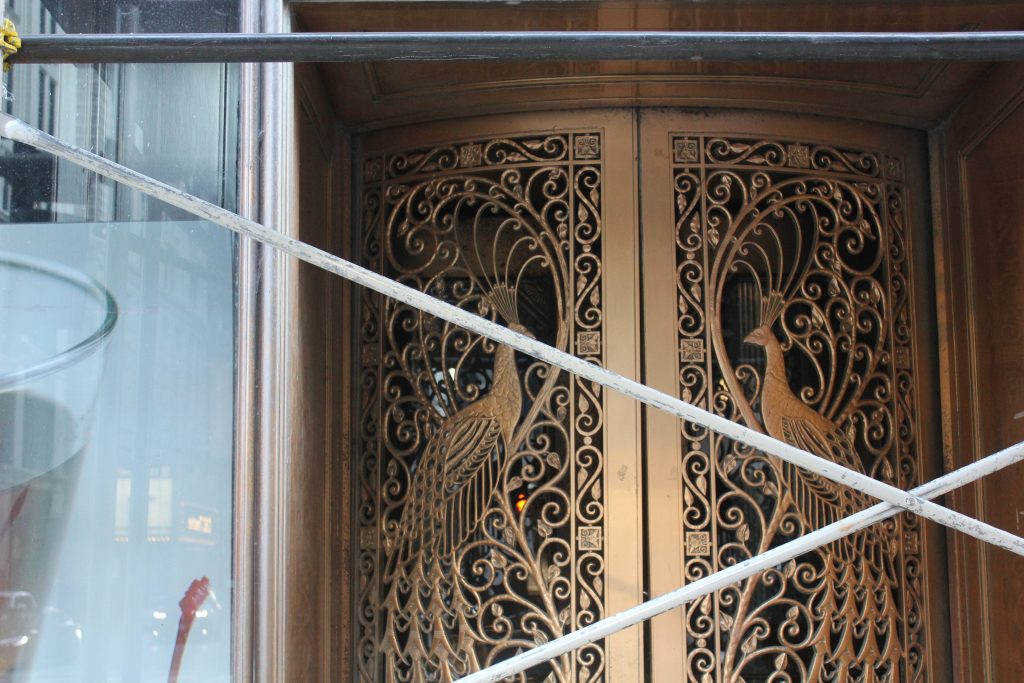
 CD Peacock Tiffany doors/Photo: Todd Hieggelke
CD Peacock Tiffany doors/Photo: Todd Hieggelke
Bring CD Peacock Back To Its Palmer House Space
CD Peacock is an essential part of Chicago; the jeweler’s website provides extensive details on their origins as Illinois’ first registered business, tracing its history across early locations around the Loop, rebuilding after the fire and eventually opening a space in the Palmer House, described as the pride of its company:
C.D. Peacock would design a store that far surpassed any jewelry store ever created within the walls of the Palmer House Hotel at State Street and Monroe… Their most beautiful store to date. Everything was extravagant, from the jewelry cases to the ceiling detail. Even the exterior was a sight to see. Commissioned by C.D. Peacock and designed by Louis Comfort Tiffany, the original three brass Peacock doors are still on display to this day.
Today, the space sits vacant, while there are CD Peacock stores in Oak Brook and Schaumburg. An expansive “Mansion” concept store even opened in Oak Brook last year.
It seems a missed opportunity not to make their next expansion a return to their State Street space—a business so central to the city’s history should be represented there. It could also help to sustain the Jewelers Row District on Wabash, ensuring the Loop remains a destination for major jewelry purchases well into the future.
***
Three ideas for Michigan Avenue
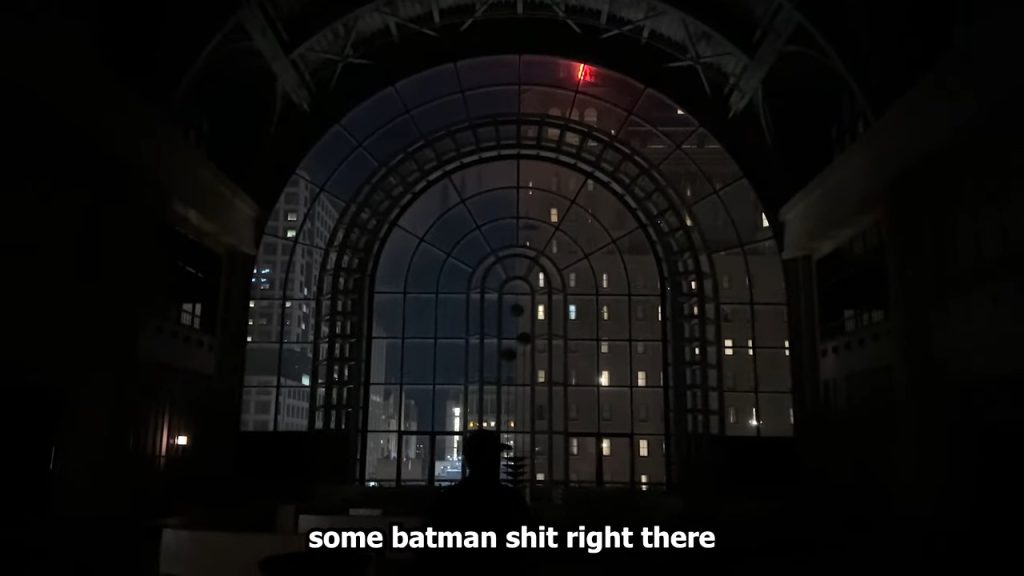
 Chicago Place screenshot by “Rotting Midwest” Youtube channel
Chicago Place screenshot by “Rotting Midwest” Youtube channel
An IMAX in the Former Chicago Place Mall
While the theatrical side of the movie business has struggled in recent years, IMAX theaters remain a bright spot, as a 2024 article from The Economist noted: “On February 27, [2024], IMAX reported that its annual revenue was up by a quarter, and it expects to install up to 150 new screens in 2024. IMAX’s improbable success exemplifies a trend: as cinemagoing changes from a regular habit into an occasional treat, the fanciest theaters are prospering.”
Downtown Chicago remains without an IMAX screen, following the closure of the Navy Pier IMAX theater during the pandemic. One would fit right into the Michigan Avenue entertainment mix, both for the endless presence of tourists looking for things to do (and places for respite after a long day of walking) and as an accessible destination for Chicagoans from across the city.
The old Chicago Place mall at 700 North Michigan might make an interesting site for one—its upper floors have been vacant for years. If it’s architecturally viable, the top floor could make for a dramatic lobby space, centered around the tall arched glass wall as a focal point. (In a recent urban explorers Youtube video, a young man points his flashlight toward the wall and exclaims, “That’s like some Batman shit right there!”) Beyond the lobby and concessions, this top-floor space could also host an Old Hollywood-style restaurant.
The Michigan Avenue-facing façade and street-level entrance could be modified to create a dramatic presence from the street, like a PoMo Grand Rex cinema—Tim Burton’s “Batman” meets Art Deco Paris.
***
A Rashid Johnson-Designed Restaurant in the Ebony/Jet Building
John H. Johnson’s Michigan Avenue publishing headquarters stands as a monument to Black Chicago, the first Black-owned building downtown and still the only high rise in the city designed by a Black architect, John Moutoussamy. Its psychedelic Ebony Test Kitchen, memorialized by David Hartt’s photos and preserved by Landmarks Illinois, was a focal point for Black American food media for generations.
A residential conversion of the building means the Test Kitchen is no longer on the Boul Mich, but its ground-floor commercial space could host a restaurant that pays tribute to this legacy, and provides a meaningful space for Black Chicago and creatives in the South Loop. It would be a place to experience the legacy of Ebony, Jet and John H. Johnson without living in the building’s apartments.
Chicago native Rashid Johnson would make an interesting creative partner for a concept—the Whitney Museum commissioned him to create a sculptural installation for their ground-floor Frenchette Bakery. The work, titled “New Poetry,” is a black steel grid over fifteen feet tall adorned with plants and other objects. And he’s represented by Hauser & Wirth, a gallery known for incorporating dining concepts into its exhibition spaces.
***
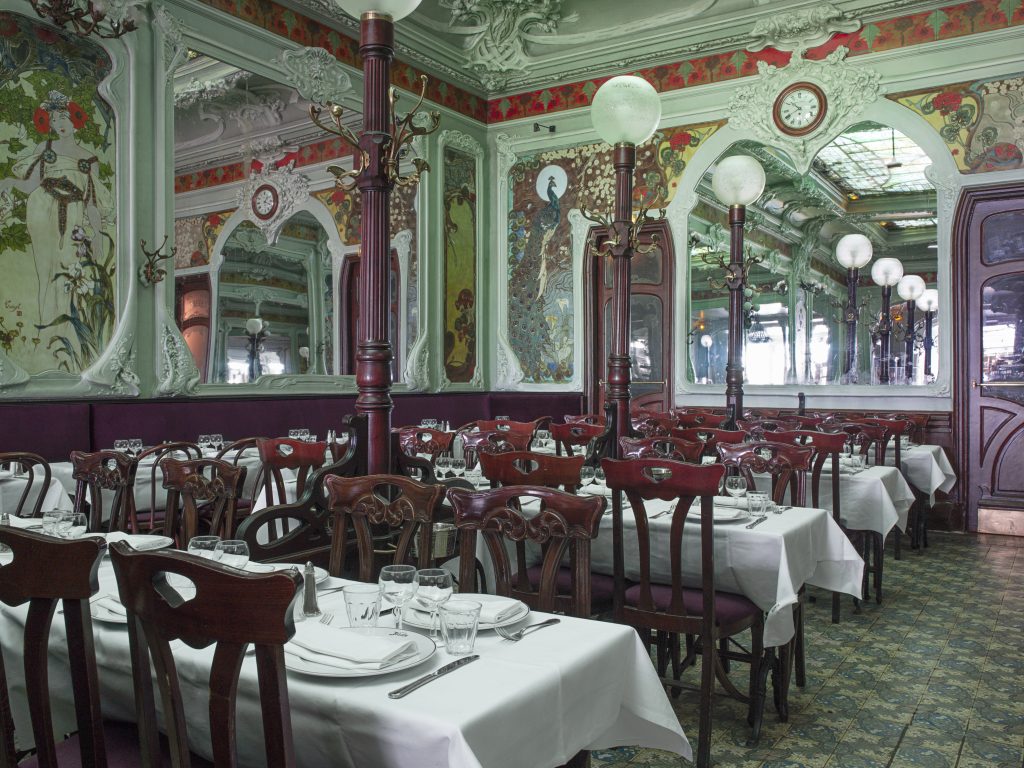
 Bouillon Julien
Bouillon Julien
A Bouillon For the Prairie
The bouillon restaurant format, described as “a large eatery where classic French dishes are served quickly and cheaply, often in magnificent surroundings,” dates back to the late nineteenth century. They’ve made a comeback in Paris over the last decade. Bouillon Julien is one such eatery—diners are greeted with gorgeous Art Nouveau environs and twelve-Euro entrees like steak frites, gnocchi carbonara or sausage with mustard sauce and mashed potatoes, alongside five-Euro appetizers like leeks vinaigrette or pork pâté with cornichons and mesclun. Champagne taste on a beer budget.
Michigan Avenue would benefit from a restaurant with this format, where a large-enough space makes reservations unnecessary, economies of scale create affordability, and design motifs as well as menus might take on a historic Chicago feel. Perhaps the Prairie style of architecture could be a theme, with Louis Sullivan ornamentation incorporated–a bouillon for the Midwest.
***
Read our interview with Lou Raizin on the Cultural Stadium here.
Order a copy of our February/March 2025 issue here.
Related
Exclusive | Dave Portnoy is quietly shopping a book
Barstool Sports founder Dave Portnoy is shopping a book, Page Six has exclusively learned. Portnoy’s agency UTA is repping the tome, sources te
We Track Sales For A Living. Here Are The 30…
As shopping experts, we shop slowly and carefully to discern if a sale offers the most bang for our buck. From everyday essentials to larger splurges, knowing w
Can you afford to be patriotic when grocery shopping?
CBCPenguins bask on the shore of King George Island near Brazil's Comandante Ferraz research station in Antarctica.Antarctica is like no place on Earth. The "W
Our Readers Top Loved Products Last Month Were All Sleep…
1TOP-TESTED COTTON SHEETSCalifornia Design Den Cotton SheetsNow 23% OffCredit: California Design DenWhy we love it: If you have been reading our What's In My Ca
